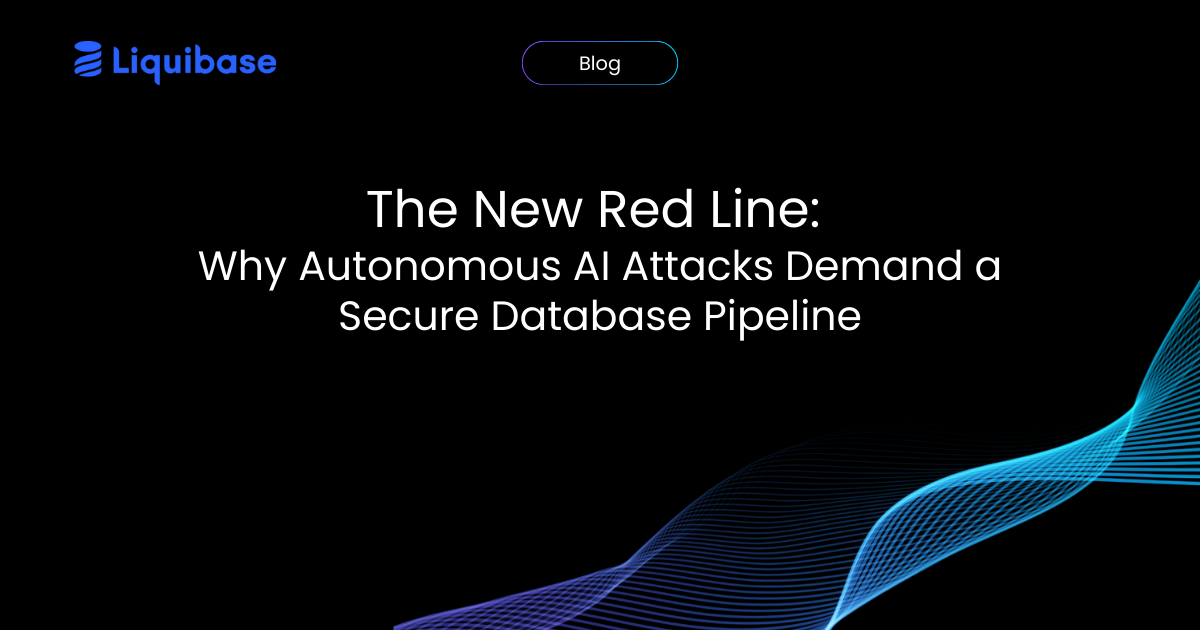Data Compliance Guide for PostgreSQL
August 1, 2025
See Liquibase in Action
Accelerate database changes, reduce failures, and enforce governance across your pipelines.

Key Takeaways
PostgreSQL is a popular database type with 45.5 percent of all developers ranking it #1 in a recent survey.
Postgres has a number of compliance supporting features including:
Advanced Authentication Mechanisms
Detailed Access Controls
Support for Data Encryption
There are some challenges with compliance inherent to Postgres as well.The most common challenges include:
- Downtime
- Long Review Cycles
- Manual Database Change Reviews and Tracking
- Common risks like database drift and malware threats
This guide will help you understand what the advantages and disadvantages are when using Postgres and help you structure a more effective compliance program.
Introduction
Data compliance in PostgreSQL environments is a critical part of your organization’s overall compliance and governance strategy. To meet evolving regulations while keeping up with rapid development, teams of application developers, database professionals, and data engineers must address the challenges of maintaining compliance throughout the entire pipeline. As demand, complexity, and competition rise, features like access controls, policy enforcement, observability, and data encryption play a vital role in maintaining data integrity and security.
For a comprehensive look at database compliance, read our full guide. For this guide, let’s focus on the key aspects of Postgres data compliance.
Postgres Compliance Features
PostgreSQL is known as "The world's most advanced open source database" . Its open-source foundation, active community, and comprehensive documentation make it a popular choice for organizations seeking reliable data management.
PostgreSQL supports compliance with features including:
Advanced Authentication Mechanisms
PostgreSQL offers multiple authentication options, such as password, Kerberos, and LDAP. This flexibility lets organizations choose the authentication approach that best meets their security and compliance needs.
Detailed Access Controls
PostgreSQL enables granular access management at the table, column, and row levels. This precision ensures that users only access the data they are authorized to see, supporting privacy and protection standards.
Support for Data Encryption
PostgreSQL includes options for encrypting data at rest and in transit. Encryption helps protect sensitive information and supports compliance with requirements for safeguarding personal and financial data.
Postgres Compliance Challenges
Balancing innovation with regulatory requirements is a major challenge. As organizations adopt new technologies, they must continuously monitor and update compliance strategies, which requires resources and expertise.
The most common challenges to maintaining effective compliance for Postgres databases include:
- Downtime: Downtime can violate availability requirements and may result from compliance issues that need to be resolved before systems come back online.
- Long Review Cycles: Extended review processes can delay updates needed to meet changing regulatory demands.
- Manual Database Change Reviews and Tracking: Manual processes increase the risk of errors and omissions, making it harder to prove compliance.
- Malware: Malicious software can compromise data integrity and availability, leading to regulatory violations.
Teams focused on compliance can overcome these challenges by adopting a modern DevOps approach to data and database change management.
Key Features and Practices to PostgreSQL compliance:
Every effective data compliance program should address these core elements (below). To ensure PostgreSQL compliance, key features and practices include:
- Manage Access Control: Implement role-based access controls (RBAC) and row-level security (RLS) to provide granular control over data access, thereby limiting exposure of sensitive information.
- Implement Robust Auditing and Monitoring: Utilize comprehensive logging capabilities to track data access and modifications, which is crucial for audit trails and detecting unauthorized activity. Tools such as Percona Monitoring and Management (PMM) can facilitate continuous monitoring.
- Adhere to Encryption Best Practices: PostgreSQL supports encryption for data at rest (within the database) and in transit (during transmission), ensuring the confidentiality and integrity of sensitive data.
- Follow Data Retention and Deletion Policies: Leverage PostgreSQL features to manage data according to defined retention and deletion policies, supporting user privacy rights and regulatory requirements like GDPR or CCPA.
- Follow Configuration and Hardening Best Practices: Adhere to security best practices and hardening guidelines, such as those found in STIGs (Security Technical Implementation Guides), to ensure a securely configured database.
- Thoroughly Document the Environment and Keep a Record of Changes: Maintain comprehensive documentation of governance practices, security configurations, and data handling procedures, which is essential for demonstrating compliance during audits.
Improve Postgres Data Compliance with Database CI/CD Automation
Without automation, CI/CD (Continuous Integration/Continuous Deployment) often falls short at the database layer, putting compliance at risk. Automating database compliance means using tools and processes to enforce coding standards, security policies, and regulatory requirements throughout the entire pipeline.
Automated checks ensure database changes are reviewed for compliance before deployment, reducing risk and supporting faster, safer releases.
Liquibase provides automated, secure, and compliant database change management pipelines that help teams deliver updates faster with less manual work. With Liquibase, teams can track all data changes in one place, understand what changed, who made the change, and when it happened. This visibility helps reduce remediation time, simplify audits, minimize downtime, and eliminate manual, error-prone reviews.
Database DevOps automation also allows teams to detect database drift by comparing changelogs to the current state. This makes it easier to spot and address unauthorized or accidental changes, keeping critical data secure and compliant.
Liquibase supports Postgres data compliance—and compliance automation for over 60 database types—through a range of features.
Automated Database Change Policy Checks
Automating SQL change reviews for Postgres helps reduce human error, which is a leading cause of data breaches and compliance incidents. Liquibase Policy Checks automate the review process, ensuring every change meets your organization’s policies and standards. By integrating policy checks into deployments, you maintain a robust audit trail and enforce compliance with every update.
Controlled Database Access
Automating access management using secret management tools improves traceability and security. Advanced governance features support safe collaboration across teams without granting unnecessary privileges or risking out-of-process changes.
Schema Drift Detection
Compliance automation for databases helps protect against ransomware and malware by alerting teams to unauthorized changes. With context for potential fixes, this capability preserves database integrity and supports ongoing security and compliance.
Tracking and Visibility
Integrating change management into CI/CD pipelines provides granular tracking and observability for every change. Teams can easily see what changed, who made the change, and when, making audits and remediation more straightforward.
Database Version Control
Version control for databases is a structured way to track and manage schema changes over time. This approach makes it easier for teams to collaborate, understand the history of changes, and roll back updates if needed. Implementing version control in databases supports compliance by creating a clear audit trail of who made what change and when. Treating database change with the same rigor as application code completes the CI/CD workflow and strengthens compliance.
Visibility
Visibility into data and database management lets teams see what has changed, who made changes, and when. Enhanced visibility shortens remediation time and simplifies audits. When integrated with broader observability programs, this insight helps optimize compliance workflows using DevOps metrics.
Automate Postgres Data Compliance to Drive Efficient Database Change
To learn more about how Liquibase supports database and data compliance for Postgres and 60+ other databases, see Streamlining Database Compliance with CI/CD Integration .
FAQ:
Q: What are some core data compliance requirements to keep in mind when designing a data compliance program?
A: Compliance requirements come from local, national, and global authorities. Data compliance typically centers on four main areas:
- Privacy: Privacy compliance means following laws and rules that protect individuals’ personal information from unauthorized access or misuse. It helps organizations handle personal data responsibly and maintain trust with users.
- Protection: Data protection requirements focus on securing information from loss, theft, or corruption, whether stored digitally or physically. Meeting these standards ensures sensitive data remains confidential, accurate, and available.
- Industry Standards: Industry standards are sector-specific rules—such as those in finance, healthcare, or telecom—that set minimum expectations for data handling. Following these standards reduces risk and improves interoperability.
- Organizational Policies: Internal policies define which roles can access specific data and at what security level, making sure both company and customer information stays protected.
Q: Which regulatory mandates are driving compliance efforts today and what are the differences between them?
A: Regulatory requirements for databases like Postgres are constantly evolving worldwide. Here are some mandates that have a significant impact:
- GDPR: The General Data Protection Regulation gives European Union citizens control over their personal data and sets strict requirements for data protection and privacy, both inside and outside the EU.
- CCPA: The California Consumer Privacy Act builds on GDPR principles and sets the standard for privacy in the United States. While it directly protects California residents, its reach extends to organizations nationwide due to the mobility of users.
- SOX: The Sarbanes-Oxley Act requires accurate financial reporting and disclosure from US companies, affecting how financial data is managed within databases.
- HIPAA: The Health Insurance Portability and Accountability Act protects health information by requiring secure handling of medical and payment records and enabling patient access to their own data.
- GLBA: The Gramm-Leach-Bliley Act requires financial institutions to safeguard private financial information, demanding strict management and security across databases.
- PCI DSS: The Payment Card Industry Data Security Standard enforces strong security protocols for organizations handling credit card transactions to help prevent fraud.
These regulations highlight the need for secure, auditable, and compliant data management practices across every industry.
Q: Why is automated policy enforcement for database change so critical for compliance efforts?
A: Automated policy enforcement is essential when managing database change effectively with the efficiency required at scale. While most teams have adopted modern CI/CD practices for application code, database change remains one of the least automated, least governed areas of the delivery process. Policy checks, standardization, and compliance efforts address this challenge by bringing structure and control to the way database changes are made in automation. With these checks in place, teams can automatically enforce rules that catch issues like missing rollbacks, destructive data changes, or inconsistent naming before changes are deployed.



.png)


.png)
.png)
.png)





